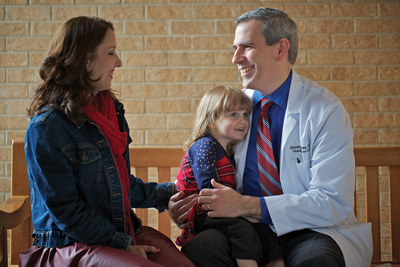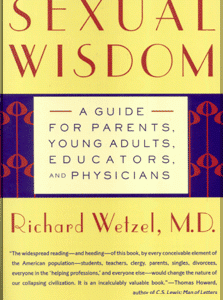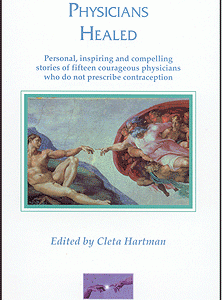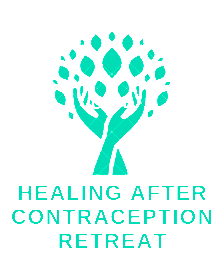You’ve probably heard the basic story by now: busses full of students heading home from the March for Life in Washington D.C. got stuck on a highway because of a blizzard, and while they were waiting they constructed an altar out of snow and held Mass on the side of the highway. Amazing!
ChurchPOP tracked down the priest who presided over this historic Mass, Fr. Patrick Behm, and interviewed him about his experience.
“It was incredible,” Fr. Behm told ChurchPOP, “easily one of the highlights of my time as a priest.”
[More coverage: The Best Photos of the Historic Turnpike Mass of 2016!]
[More coverage: Watch Worshippers Receive Communion at the Great Turnpike Mass of 2016]
[More coverage: Watch Pro-Lifers Pray “Our Father” As Snow Falls in the Turnpike Mass]
[More coverage: Here’s a Video of the Great Turnpike Mass of 2016!]
Fr. Behm is the parochial vicar of All Saints’ Parish in Le Mars, IA as well as parochial vicar of St. Patrick’s Parish in Akron, IA, and the chaplain of Gehlen Catholic High School in Le Mars. He was chaperoning five students from the high school.
According to Fr. Behm, his group plus several other big groups from other schools got stuck near the mile marker 133 on the Pennsylvania Turnpike. They were there for approximately 22 hours! The cause of the jam, Fr. Behm was told, was an accident involving two tractor-trailers that blocked all of the westbound lanes of traffic. In the time it took to clear this accident, the snow in turn rendered the road impassible and the vehicles immobile.
He couldn’t claim credit for the idea of having Mass: “I was the principal celebrant of the liturgy,” he said, “but credit for the idea, and credit for building the altar, and credit for going around to the various buses inviting people to join them belongs completely to the pilgrims from the Archdiocese of St. Paul and Minneapolis, particularly Mr. Bill Dill, their youth minister.”
It was those students from the Archdiocese of St. Paul and Minneapolis who built the snow altar: “Those Minnesotans apparently know how to build stuff out of snow!”
The now famous Mass was a powerful spiritual experience for Fr. Behm and everyone else involved.
“It left me with many impressions, but among them was the fact that Jesus enters into the storm. Jesus comes to us, in the storms of our life, and enters in to be with us. He desires to be with His people, and if we respond to this invitation to let Him in, then the message is profound hope and joy.”
Fr. Behm praised everyone for responding positively to such a hard situation: “Everyone on that turnpike had a choice: to respond with joy and a positive outlook, or to respond with negativity and anger. Neither approach would have gotten us out of there any faster. But, one approach at least made the waiting more bearable and tolerable.”
Further, he saw God reap spiritual fruit from the event: “God, in His providence, used this event to share the Gospel with scores of people who may never hear the Good News.”
Lastly, wanted to express an immense gratitude to all the workers who helped them: “the Pennsylvania National Guard, the Highway Patrol, the Pennsylvania DOT, local law enforcement, and the local fire department. It was a massive undertaking, and these first responders did a remarkable job.”
[More coverage: The Best Photos of the Historic Turnpike Mass of 2016!]
[More coverage: Watch Worshippers Receive Communion at the Great Turnpike Mass of 2016]
[More coverage: Watch Pro-Lifers Pray “Our Father” As Snow Falls in the Turnpike Mass]
[More coverage: Here’s a Video of the Great Turnpike Mass of 2016!]
Here’s our full interview:
Q: Have you ever done this before? How did you get the idea to build a snow altar have Mass outside on the side of the highway?
No. This was definitely a first for me. And, it wasn’t my idea at all.
I’m kind of being attached to this story, as I was the principal celebrant of the liturgy, but credit for the idea, and credit for building the altar, and credit for going around to the various buses inviting people to join them belongs completely to the pilgrims from the Archdiocese of St. Paul and Minneapolis, particularly Mr. Bill Dill, their youth minister.
Q: Who built the altar? Was it just snow?
Pilgrims from the Archdiocese of St. Paul and Minneapolis. And yes, it was completely made out of snow. Those Minnesotans apparently know how to build stuff out of snow!
Q: Did only people from your group participate in the Mass, or did other people stuck on the turnpike also participate?
It was far more than our group. The groups that I know were in attendance were from Dioceses from Iowa, Nebraska, Minnesota, Missouri, North Dakota, South Dakota, Wisconsin, Ohio, and Pennsylvania. In addition, there may have been others who got out of their vehicles and joined us. I’m not sure about that though.
Q: How many people participated approximately?
The number I’m being told is approximately 500.
Q: Do you have any stories about how this positively affected people spiritually?
Overall, I’d say it certainly raised the spirits of all those in attendance. It brought the light of Christ to a very bleak situation, and helped continue to spread the message of the Gospel of Life, that all life is sacred.
Q: What was it like? What impression did the event leave you with?
It was incredible…easily one of the highlights of my time as a priest. It left me with many impressions, but among them was the fact that Jesus enters into the storm. Jesus comes to us, in the storms of our life, and enters in to be with us. He desires to be with His people, and if we respond to this invitation to let Him in, then the message is profound hope and joy.
Everyone on that turnpike had a choice: to respond with joy and a positive outlook, or to respond with negativity and anger. Neither approach would have gotten us out of there any faster. But, one approach at least made the waiting more bearable and tolerable.
Q: What’s been your reaction to the overwhelmingly positive reaction to the event on social media?
I’m stunned, actually. I’ve been trying to deflect credit and praise away from myself and on those who truly deserve it, Mr. Dill and the ASPM pilgrims. I never would have envisioned that it would receive the type of coverage it has.
But, God, in His providence, used this event to share the Gospel with scores of people who may never hear the Good News.
Q: Is there anything else you’d like to share about it?
Just to thank people for their prayers, and to thank everyone who helped us: the Pennsylvania National Guard, the Highway Patrol, the Pennsylvania DOT, local law enforcement, and the local fire department. It was a massive undertaking, and these first responders did a remarkable job.


















Teenage girl died from blood clot after taking contraceptive pill
http://www.mirror.co.uk/news/uk-news/teenage-girl-died-blood-clot-7216463
A teenage girl who was on the contraceptive pill died from an ‘extremely rare’ blood clot after returning home from a family holiday, an inquest heard.
Sophie Murray, 16, had been prescribed the pill for around eight months by the time she returned from Gran Canaria last September.
But two weeks later, the “happy and healthy” teenager, from Accrington, started complaining of breathlessness and chest pain.
Blackburn Coroners Court heard how tests by her GP confirmed she was suffering from exercise induced asthma (EIA), the Accrington Observer reported .
She was prescribed an inhaler, however it was ineffective.
Mum Shelley Crichton told the hearing how Sophie woke up on November 8 last year saying she couldn’t breathe and shortly after had a ‘fit’ and her ‘lips turned blue’.
She was rushed to hospital however passed away later that day.
Dr Richard Prescott said Sophie died of a pulmonary embolism due to deep vein thrombosis (DVT) and a contributory factor was the oral contraceptive pill.
He told the hearing that the ‘large clot’ was 8mm in diameter and if it had been detected earlier she could have been given blood thinners and survived.
The inquest heard how Sophie was using the ‘common’ pill Microgynon and a leaflet accompanying the prescription warned how using it ‘increases the risk of developing a blood clot’ and in ‘very rare cases’ a blood clot can form but it is ‘very rarely fatal’.
Joanne Birch, a specialist nurse in sudden and unexpected deaths, said only six out of every 10,000 women on the contraceptive pill develop DVT, compared to only two in 10,000 without the pill, and that fatalities are ‘extremely rare’.
Shelley told the hearing how Sophie’s breathing had got worse since returning from holiday and she was struggling to walk to school, dance or enjoy exercise DVDs and complained her body was ‘aching’.
The inquest heard how Shelley and Sophie visited Dr Paramundayil Joseph at the Dill Hall surgery in Accrington on October 15 after feeling like she was ‘breathing through a straw’.
The GP said he ordered tests which later confirmed EIA and Sophie was prescribed an inhaler.
However she later returned on November 5 – three days before her death – to say it ‘didn’t do anything’ and was prescribed a different inhaler and a tablet to help with her breathing before exercise.
Dr Joseph said how he didn’t consider the diagnosis of DVT as she was young, not overweight or a smoker, had no family history and didn’t have any swelling or tenderness in her leg.
He said her breathlessness, which is a symptom of a pulmonary embolism, could also be the symptom of ‘many diseases’ and ‘can be similar’ to EIA.
He told the inquest that risks associated with the contraceptive pill usually occur after ‘many years of taking the pill and also when a woman is a lot older’.
He said: “It’s the most common combined pill. I have prescribed it for the last 31 years and this has never happened until now.
“She was very active and it’s very rare and very unfortunate.”
Assistant coroner Derek Baker recorded a narrative verdict and said it was a ‘tragic case’.
He said: “This tragedy has brought overwhelming grief to Sophie’s family.
“She was a young girl when she died. The cause of death pulmonary embolism is common enough but I have never seen it involving someone as young as this with no other problems.
“These conditions in a girl of this age are rare but they are a recognised side effect of the pill she was prescribed and can also be caused by long flights and the immobility associated. It’s not my role to blame but I must say Sophie’s mum did everything that could reasonably have been done. There was no delay, she took medical advice as the symptoms displayed themselves.
“Sophie herself was very stoic about it and I think you were both hoping the symptoms were relatively minor and would pass.
“If it was diagnosed and treated earlier she would have had a very good prospect of recovery.
“I acknowledge a tragedy of this scale is going to result in crushing, all-consuming grief.”
Sophie was a pupil at Accrington Academy and dreamed of being a paramedic.
Posted in News & Commentary | No Comments »